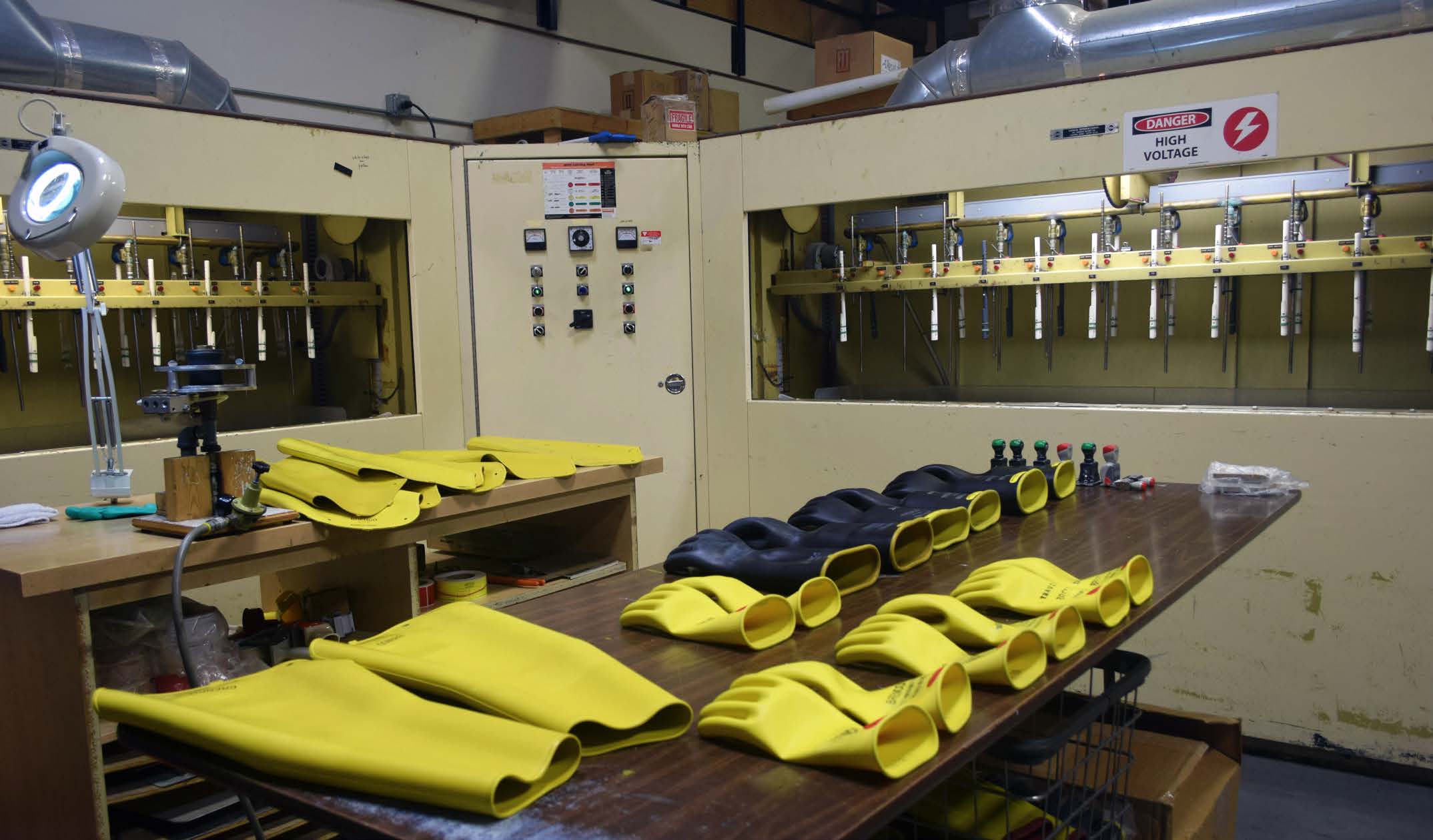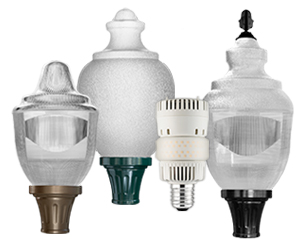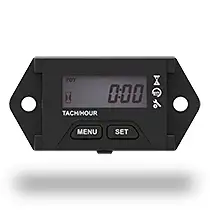What is a Circuit Breaker In Protection
By R.W. Hurst, Editor
Substation Relay Protection Training
Our customized live online or in‑person group training can be delivered to your staff at your location.

- Live Online
- 12 hours Instructor-led
- Group Training Available
Download Our OSHA 3873 Fact Sheet – Minimum Approach Distance and Training Requirements

- Calculate MAD using voltage and overvoltage values
- Ensure proper communication between host and contract employers
- Meet OSHA training requirements for qualified electrical workers
A circuit breaker is an electrical safety device that automatically interrupts current flow during overloads, short circuits, or faults. Circuit breakers protect wiring, equipment, and people, ensuring safe power distribution in homes, industry, and utilities.
What is a Circuit Breaker?
A circuit breaker is a protective device that interrupts dangerous electrical currents, preventing damage and ensuring safety.
✅ Prevents overloads and short circuits in electrical systems
✅ Protects equipment, wiring, and personnel from faults
✅ Ensures reliable and compliant power distribution
To fully understand what is a circuit breaker, it helps to see how it fits into the larger framework of electrical protection systems.
Basic Protection Relay Training
Request a Free Training Quotation
Circuit breakers are crucial components in medium voltage power systems used in industrial, commercial, and institutional settings. As safety mechanisms, they are designed to break circuits and protect electrical systems from overloads, short circuits, and other electrical faults. This article provides an overview of medium voltage circuit breakers for qualified electricians working in these environments.
While this article focuses on medium-voltage breakers, CBs exist across a wide range of voltages. They range from small devices that protect household branch circuits (such as MCBs and MCCBs) to large switchgear assemblies used in substations and transmission systems. When studying protective devices, it’s essential to explore relay and circuit breaker coordination, which ensures faults are isolated quickly without shutting down the entire system.
How Does a Circuit Breaker Work?
Most breakers use a thermal magnetic trip unit that reacts both to gradual overload protection and sudden fault currents. Some advanced designs also provide arc fault and ground fault protection, giving added safety in residential and commercial applications.
Test Your Knowledge About Electrical Protection!
Think you know Electrical Protection? Take our quick, interactive quiz and test your knowledge in minutes.
- Instantly see your results and score
- Identify strengths and areas for improvement
- Challenge yourself on real-world electrical topics
When a unit trips, it is responding to a fault or overload condition within the electrical circuit it is designed to protect. Electrical circuit protective devices come in various forms, ranging from miniature circuit breakers in household panels to advanced ground fault circuit interrupters (GFCIs) that detect leakage currents and protect against shock hazards. Proper connection of the neutral wire is also essential for accurate operation, particularly in residential systems where device performance directly impacts safety and reliability.
Main Components of a Circuit Breaker
| Component | Function |
|---|---|
| Frame | Provides structural support and housing for the breaker |
| Contacts | Open and close to connect or disconnect current flow |
| Trip Unit | Senses abnormal conditions (overload, short circuit) and triggers the opening mechanism |
| Arc Chute / Vacuum / Gas Medium | Extinguishes the electrical arc when contacts separate |
| Operating Mechanism | Provides the mechanical force to open/close the breaker |
| Insulating Medium | Maintains electrical isolation between energized parts |
Together, these parts ensure that the device responds quickly to abnormal currents, minimizes damage, and restores system safety.
Fuses vs Circuit Breakers: A Comparison
Both fuses and circuit breakers protect electrical systems, but they operate differently and serve distinct purposes.
-
Fuses are single-use devices that melt when current exceeds their rating. They are inexpensive and reliable but require replacement after operation.
-
CBs can be reset after tripping, offering reusability and convenience. They also allow more advanced features, such as adjustable trip settings, remote operation, and integration with protective relays. For those new to the subject, basic protective relay training provides the foundational knowledge needed to understand how relays and breakers interact.
-
For residential and industrial systems where downtime and convenience matter, CBs are typically preferred. Fuses may still be used in specialized or backup protection roles.
Circuit Breaker vs Fuse
Fuses are single-use devices that melt when current exceeds their rating. They are inexpensive and reliable but require replacement after operation.
Circuit breakers can be reset after tripping, offering reusability and convenience. They also allow advanced features such as adjustable trip settings, remote operation, and integration with protective relays. For residential and industrial systems where downtime and convenience matter, breakers are typically preferred.
| Feature | Circuit Breaker | Fuse |
|---|---|---|
| Operation | Trips and can be reset or switched back on | Melts once and must be replaced |
| Reusability | Reusable, no replacement needed after tripping | Single-use, requires new fuse element |
| Protection | Overload, short circuit, and advanced options (GFCI, AFCI) | Primarily short circuit and overload |
| Cost | Higher initial cost but long-term savings | Low cost, but recurring replacement |
| Response Time | Slightly slower; can be delayed by mechanism | Very fast, near-instant fault clearing |
| Applications | Residential, commercial, industrial, medium- and high-voltage systems | Simple circuits, automotive, backup protection |
Medium Voltage Circuit Breakers
Medium voltage circuit breakers are designed to handle voltage levels between 1 kV and 72.5 kV, making them suitable for various power distribution applications. As a result, they play a vital role in ensuring the safety and reliability of electrical systems in industrial, commercial, and institutional facilities. In addition, these devices protect equipment from damage and minimize the risk of electrical fires and other hazards.
There are several types of medium-voltage CBs, each with unique characteristics and specific applications. Some common types include:
-
Air Circuit Breakers (ACBs): CBs utilize air as the arc-extinguishing medium and are commonly found in indoor switchgear assemblies. They provide reliable protection for low and medium-voltage circuits in industrial and commercial settings.
-
Vacuum Circuit Breakers (VCBs): VCBs utilize a vacuum interrupter to extinguish the arc, resulting in faster and more efficient current interruption. They are widely used in medium-voltage power systems due to their compact size, low maintenance requirements, and high reliability.
-
Gas-Insulated Circuit Breakers (GCB): GCBs use an insulating gas, typically sulphur hexafluoride (SF6), to quench the arc. These breakers offer excellent insulation properties and high interruption capabilities, making them suitable for high-voltage power systems.
-
Oil Circuit Breakers (OCB): OCBs rely on insulating oil as both the arc-extinguishing medium and insulation. Although newer technologies have largely replaced them due to environmental concerns and maintenance requirements, some older installations may still use them.
When selecting a medium voltage circuit breaker for a specific application, electricians must consider factors such as the device's voltage and current ratings, interrupting capacity, and response time. It's also essential to comply with local electrical codes and industry standards.
In industrial, commercial, and institutional power systems, circuit breakers can be operated manually or automatically through protective relays. Protective relays monitor system parameters such as voltage, current, and frequency and send trip signals to the CB when a fault is detected. This automated response helps minimize the impact of electrical faults on equipment and overall system stability. Many electricians also study overcurrent protection to better grasp how apparatuses are rated and applied in real-world systems.
Sign Up for Electricity Forum’s Electrical Protection Newsletter
Stay informed with our FREE Electrical Protection Newsletter — get the latest news, breakthrough technologies, and expert insights, delivered straight to your inbox.
Maintenance of Medium Voltage Circuit Breakers
Maintenance of medium voltage circuit breakers is crucial for ensuring their reliability and longevity. Regular inspection and testing can help detect potential issues before they escalate, reducing the risk of equipment damage and costly downtime. Some common maintenance tasks include:
-
Visual inspection: Check for signs of wear, damage, or corrosion on the unit's exterior and connections.
-
Mechanical inspection: Examine the device's moving parts, such as contacts and operating mechanisms, for wear and proper alignment.
-
Electrical testing: Perform tests like insulation resistance, contact resistance, and timing tests to assess the device's electrical performance.
-
Cleaning and lubrication: Clean and lubricate moving parts as needed to prevent friction and ensure smooth operation.
-
SF6 gas analysis (for GCBs): Regularly monitor the gas's purity, moisture content, and pressure to ensure optimal performance.
Medium voltage circuit breakers play a vital role in protecting electrical systems in industrial, commercial, and institutional power systems. By understanding the various types of circuit breakers and their applications, electricians can select the most suitable option for each application. In addition, regular maintenance, adherence to industry standards, and a focus on safety can help ensure the continued reliability and efficiency of these critical components in power systems.
Furthermore, staying up-to-date with advancements in protection technology and industry best practices can help electricians improve the safety, efficiency, and reliability of the power systems they work with. For instance, new developments in solid-state circuit breakers and advanced protective relay technologies can offer enhanced protection and faster fault detection and response. To go deeper, you can learn how circuit breakers relate to other circuit protection devices, such as fuses, relays, and surge suppressors.
In addition to selecting and maintaining the appropriate circuit breakers, electricians should also consider implementing a proper system design that complements the CB design and ensures coordination between the two. Properly coordinating the settings of multiple CBs and protective devices within a power system ensures that only the affected portion of the system is isolated during a fault, minimizing disruptions and downtime.
Training and safety protocols are essential when working with medium-voltage circuit breakers in industrial, commercial, and institutional settings. Electricians should be knowledgeable about the specific equipment they work with and follow established safety guidelines, including lockout/tagout procedures and the proper use of personal protective equipment (PPE).
It is essential for qualified electricians working with medium voltage power sources in industrial, commercial, and institutional environments to understand what a circuit breaker is and how it functions. By selecting the right type of CB, performing regular maintenance, and adhering to safety guidelines, electricians can contribute to a safer and more reliable electrical infrastructure. Additionally, staying up-to-date with technological advancements and industry best practices can further enhance the performance and protection of these critical components in power systems. Devices are only one part of a comprehensive safety strategy, often working in conjunction with transformer protection and other fault detection technologies to ensure equipment reliability.
Low-Voltage Applications (MCB and MCCB)
Miniature Circuit Breakers (MCBs) protect branch circuits in homes and offices, while Molded Case Circuit Breakers (MCCBs) offer higher ratings and adjustable trip settings for small commercial systems. Both types form the backbone of low-voltage switchgear, providing essential overcurrent protection.
Understanding Ratings and Standards
Every circuit breaker must be selected according to its ratings and tested to applicable standards.
-
Voltage Rating: The maximum system voltage the device can safely interrupt.
-
Current Rating: The continuous current the device can carry without overheating.
-
Interrupting Capacity (Breaking Capacity): The highest fault current the device can safely interrupt without failure.
-
Standards: International standards, such as IEC 62271 (for high-voltage switchgear) and IEC 60947 (for low-voltage breakers), define performance requirements. Meanwhile, the NEC and CEC outline installation and usage rules.
Correct application of these ratings ensures both safety and compliance with electrical codes.
Frequently Asked Questions
How do I maximize the life of a circuit breaker?
To extend breaker life, choose the correct current rating and interrupting capacity, follow manufacturer guidelines, and ensure proper installation. Keep the switchgear environment clean, avoid overloading, and schedule inspections of contacts, arc chutes, and trip units. Using accessories like GFCIs and surge protection also reduces stress on breakers.
Can I reset a breaker myself?
Yes. Breakers are designed to be reset after tripping. But if a breaker trips frequently, the root cause — such as overload, short circuit, or fault current — must be fixed before resetting to avoid damaging the device.
What makes a breaker trip frequently?
Common causes include overloaded circuits, ground faults, or faults that exceed the breaker’s trip curve. In medium-voltage systems, protective relays in the switchgear assembly often initiate trips for safety.
How often should circuit breakers be maintained?
Low-voltage devices like MCBs need occasional checks, while medium-voltage breakers require scheduled inspection of arc chutes, contacts, and operating mechanisms. Periodic testing of interrupting capacity ensures long-term reliability.
What do current rating and interrupting capacity mean?
The current rating is the maximum continuous current the breaker can handle safely. Interrupting capacity is the highest fault current it can stop without failure. Both values must be considered for proper protection coordination.
What is an arc chute in a circuit breaker?
An arc chute divides and cools the arc that forms when contacts open, preventing damage to the breaker and helping it maintain its interrupting capacity.
Related Pages












